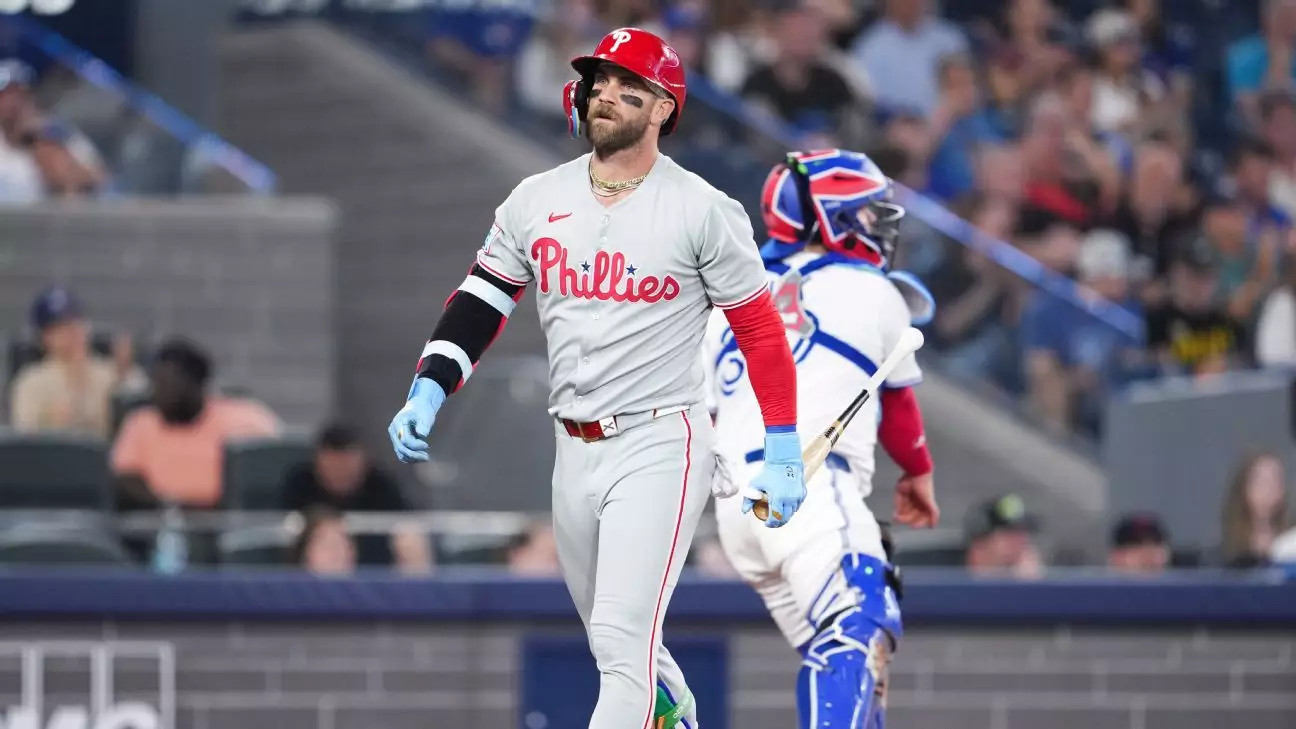Bryce Harper’s recent return to the Phillies lineup after a spell on the injured list marks a significant moment not just for the player, but for the team and fans alike. Harper has been battling inflammation in his right wrist that has hampered his performance since last season. Despite the chronic discomfort, Harper fought through immense pain, maintaining a respectable batting average and home run tally in 57 games this year. His perseverance underscores the intense physical toll MLB athletes endure and the mental strength required to compete at the highest level despite nagging injuries.
The decision to come off the injured list wasn’t impulsive; Harper and the medical staff recognized that his wrist had plateaued in recovery—neither improving nor deteriorating over several days. This “standstill” indicated that further rest might not yield better results. With the risk of long-term damage looming, Harper chose to take his chances on the field, acknowledging that the next steps would depend on how his wrist responded daily.
The Impact on Team Dynamics
Harper’s absence has undeniably influenced the Phillies’ performance, but the team has managed to stay competitive, even leading the NL East with a 13-14 record in his absence. This resilience can largely be attributed to the emergence of rookies and role players stepping up, particularly Otto Kemp, who filled in admirably during Harper’s hiatus. Kemp’s versatility across multiple positions and his ability to produce offensively proved crucial for Philadelphia. Yet, Harper’s return raises questions about lineup adjustments and managing game time to maximize both player health and effectiveness.
Manager Rob Thomson’s cautious optimism about Harper’s day-to-day status reflects an understanding of the delicate balance required. While Harper’s skill set is irreplaceable, the Phillies must weigh the risk of aggravating his injury against the necessity of his bat in the lineup. The possibility of Harper taking on a designated hitter role, especially with Kyle Schwarber excelling in that capacity, presents a strategic dilemma—how to best utilize Harper’s talent without overtaxing his recovering wrist.
Harper’s Role Beyond the Statistics
Harper’s influence extends well beyond his stats. As a two-time NL MVP, eight-time All-Star, and a pivotal force behind the Phillies’ three consecutive playoff runs, his leadership and presence energize the clubhouse and fanbase. His performance in the 2022 NLCS, where he earned MVP honors, symbolizes his clutch mentality and competitive drive. While his numbers this season are solid, given his injury, Harper represents the intangible qualities of resilience and determination that can shift a team’s momentum.
However, it’s worth critically assessing whether Harper’s continued play through injury risks long-term consequences for both him and the franchise. While fans understandably celebrate his toughness, there is an inherent danger in glorifying playing hurt, especially in a sport as demanding as baseball. The Phillies must consider the sustainability of Harper’s health over immediate gains.
Future Outlook and Considerations
Harper’s journey through injury and recovery shines a light on broader issues in professional sports: the pressure to perform, the gamble of returning too soon, and the complex interplay between player welfare and team success. The Phillies’ handling of Harper’s status, including the recent roster move designating Buddy Kennedy for assignment, highlights the tough choices organizations make to optimize their squads.
Looking ahead, Harper’s adaptability might become a critical asset. Whether he continues as a first baseman, moves to a designated hitter spot, or adjusts to a limited role, his ability to contribute despite physical limitations could serve as a model for veteran players managing injuries in the later stages of their careers. The Phillies’ success may well hinge on striking a balance between managing Harper’s workload and exploiting his unparalleled experience and skill.
In the end, Harper’s perseverance embodies not just personal grit but the realities of professional sports where physical setbacks collide with the relentless demand for excellence. His situation calls for thoughtful management—not only from Philadelphia’s corner but also in how the broader baseball community respects and supports player health amid the grind of long seasons.

